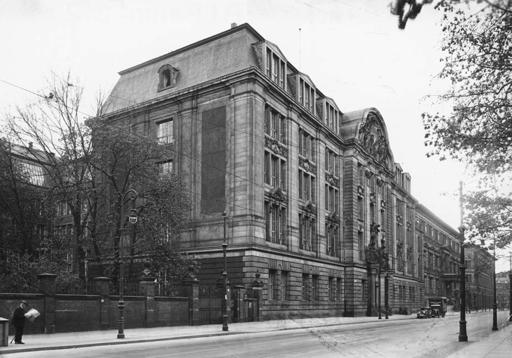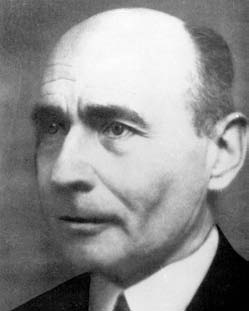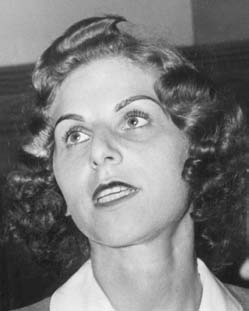Berlin at War (56 page)
Authors: Roger Moorhouse

As the interrogations implicated an ever-wider circle of conspir -
ators, four subsequent trials were held. No quarter was shown to the
defendants. The most tragic of them all, Sala Kochmann, had tried
to escape the clutches of the Gestapo by jumping from the window
of the police station. Despite breaking her back in the fall, she was
tried and sentenced to death with the others, and was carried to her
execution on a stretcher.12 In all, thirty-three people were executed for
the Lustgarten arson attempt.
The story of the Herbert Baum Group is rightly lauded as one
of the few examples of Jewish resistance against the tyranny of
Nazism. Yet that narrow affiliation does not tell the whole story. It
should not be forgotten, for instance, that not all members of the
Baum Group were Jewish and that they had extensive contacts with
other non-Jewish dissident groupings in the German capital, on which
they relied for material assistance in everything from typing their
enemies of the state
271
flyers to manufacturing their bombs.13 Seen in this light, the Herbert
Baum Group should also be interpreted as one of the few examples
of
German
resistance to Nazism.
Berlin was the focal point of the domestic resistance against the Third
Reich. With its liberal-cosmopolitan character, its large Jewish popu-
lation and its tradition as a bastion of the left, the city had never been
a natural constituency for the Nazis and had consistently returned
below average votes for Hitler. Even as the Nazis made their electoral
breakthrough after 1930, and in some places gained as much as half
of the popular vote, Berlin’s Nazi return never amounted to more
than a third of the total.14 The American diplomat George Kennan
noted that this attitude was still current in 1939: ‘Most of the people’,
he wrote, ‘had nothing to do with the regime . . . The Berliners them-
selves – the simple people, that is – were, of all the major urban or
regional elements among the German population, the least Nazified
in their outlook.’15
The reasons for the city’s comparative resistance to Hitler’s charms
were twofold. Firstly, Berlin’s left-wing heritage was hugely influen-
tial. Its working-class suburbs, such as Wedding and Friedrichshain,
developed very strong socialist and communist affiliations and were
the scene of violent clashes between left and right during the 1920s.
Indeed, when Goebbels was sent as Nazi Party Gauleiter to the capital
in 1927, his mission was described in the Nazi press as that of conquering
‘Red Berlin’.
Alongside this left-wing tradition, Berlin’s position as the German
capital also helped to provide a partial immunisation against Nazi
ideas. As the seat of government, the city was the natural home of
the nation’s elite and attracted a large number of intellectuals, lawyers
and politicians, many of whom opposed the Nazi regime. Their oppos i-
tion was in part political, but it was primarily based on higher ideals;
on a fundamental objection to the regime’s habit of riding roughshod
over established legal and moral principles. As a result of these factors,
Berlin gained a deserved reputation as a hotbed of resistance against
the Nazi regime, with as many as 12,000 individuals involved in organ-
ised opposition.16
Among the most principled and determined opponents of Nazism
in Berlin were the communists. For much of the 1930s the left had
272
berlin at war
appeared an increasingly moribund force in German politics. Officially
outlawed, riven by internal divisions and persecuted by the regime,
its adherents had in many cases shed their allegiances, or headed into
an embittered ‘internal emigration’, in which they sought desperately
to keep the hostile outside world at bay. Others were seduced by the
Nazi successes of those early years and managed to convince them-
selves that their working-class duty was to support Hitler, aided by a
belief in the ‘socialist’ component of ‘National Socialism’. Yet, there
were many more in Berlin who resisted Hitler’s appeal and remained
ferociously loyal to the political left throughout the Third Reich.
The war did not start well for German communists. Though their
socialist brethren were largely drawn in by the reflexive patriotism
common in wartime, communists faced a more difficult situation.
Hitler’s alliance with Stalin of August 1939 proved profoundly discon-
certing and the sudden shift in propaganda on both sides – from
hatred to mutual admiration – meant that a new round of ideological
compromises and contortions were forced upon the faithful. Some
remained unbowed, however.
One of the most effective proponents of the communist cause in
the capital was Robert Uhrig. Born in Berlin in 1903, Uhrig had been a
communist almost all his life, joining the party in 1920 and forming
workplace cells wherever he worked. First arrested in 1934, he had
been released two years later, but had returned to his old ways, quickly
heading a network of over twenty underground communist cells in
Berlin. By the outbreak of war, he had emerged – alongside the remark-
able Josef ‘Beppo’ Römer – as one of the leaders of the communist
resistance in the German capital.
Römer was of a quite different stamp to Uhrig. Around ten years
older, and born in Munich, Römer’s early career had perfectly mirrored
those of many senior Nazis. Service in the First World War had been
followed by a seamless segue into the right-wing paramilitary Freikorps,
in whose ranks Römer had even participated in the suppression of the
Munich Soviet Republic in 1919 and the crushing of the communist revolt
in the Ruhr the following year. Yet the expected graduation to right-wing
politics did not follow, and in the mid-1920s Römer began moving in the
opposite direction, soon developing close ties to the German Communist
Party (KPD). An embittered opponent of the Nazis right from the outset
of the Third Reich, he spent much of the 1930s in prison.17


Berliners inspect a bomb crater on the East-West Axis late in 1940:
‘The world had lost its former solidity.’
Civilians help with the clear-up after a raid on the northern suburbs in October 1940.





Gestapo Headquarters on
Prinz-Albrecht-Strasse.
Some of those who passed
through the building
(
clockwise from left
):
Communist resistance fighter
Beppo Römer; Otto Weidt,
who saved Jews by employing
them in his factory; Johanna
Solf, who ran a ‘salon’ of
oppositionally minded
Berliners; and Jewish
Greifer
Stella Goldschlag, who betrayed
hundreds of fugitive Jews